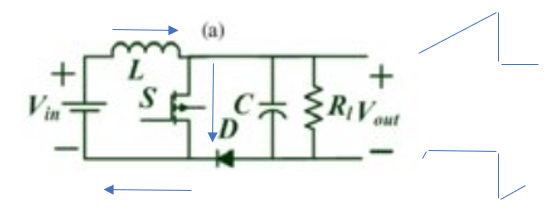Definition of "Isolation"
In page 2 of the open-access paper, which is where the images you've quoted are coming from, it says:
Fig. 3 shows the classification of PEC to focus on DC-DC converter. DC-DC converters, classified into two main categories; Non-isolated and isolated. A non-isolated converter shares a common ground between input and load or with the floating load. Whereas, in the isolated converter, input and load terminal are electrically isolated [65]. Based on the direction of power flow through the converter, non-isolated and isolated converters classified into two sub-categories; one is unidirectional, and another is bidirectional converters. To provide isolation; the transformer and coupled inductors employed in the power converter. Which increase the conversion ratio of the converter, but also increases the cost, size and losses. Thus, the high frequency is the superior option to reduce the transformer and coupled inductor size.
Thus, according to the paper's own definition:
To provide isolation; the transformer and coupled inductors employed in the power converter.
Definition of "Floating" Within the Cited Paper
Now, what does the paper say anything about floating?
The power circuit of the conventional unidirectional common grounded boost, buck and buck-boost converters, depicted in Fig. 5(a)-(c). Whereas the floating output boost, buck, and buck-boost converters, depicted in Fig. 5(d)-(f), respectively.
Thus, according to the definition within this particular paper, any power converter with a "negative" output terminal not directly connected to the common ground, is defined to be "floating" even when there's no galvanic isolation. If the output reference itself is above the common system ground, it's "floating" for the purpose of the paper. For example, if a power converter creates +20 V and +10 V its output terminals and is capable of sourcing and sinking current, and a load is connected directly across those outputs, the output is said to be 10 V and floating.
Regardless of whether it's a standard definition, since the full paper already provided enough context for the readers, it's unlikely to cause a misunderstanding.
Definition of "Floating" as Generally Used in Industry
Perhaps the definition "floating" as used in that paper is common among researchers in a particular sub-sub-field of power converters, but nevertheless, one should realize that this definition of "floating" is unconventional. Usually, "floating" is often used as a synonym of "isolation".
I can show this by quoting various engineering textbooks and dictionaries.
Electrical Product Compliance and Safety Engineering (2017), by Steli Loznen, Constantin Bolintineanu, Jan Swart:
Floating output: The output of a power supply or power converter that is ungrounded or not referenced to another output. The floating outputs are fully isolated and may be referenced positive or negative by the user. Outputs that are not floating share a common return and, as such, are referenced to one another.
Pulse-Width Modulated DC-DC Power Converters (2015), By Marian K. Kazimierczuk, page 186:
It is relatively difficult to drive the transistor in the buck-boost converter because both the source and the gate of the transistor are connected to "hot" points. Therefore, the driver is floating because neither end is connected to ground. Usually, a transformer or optical coupling is required.
The Illustrated Dictionary of Electrical Engineering (2005), Linda Watson, Lotus Press,
Floating output: converter output that ungrounded and not referenced to another output. Typically, floating outputs are fully isolated and may be referenced positive or negative by the user. Outputs are are not floating share common return and as such, are referenced to one another.
Isolated output: See floating output.










